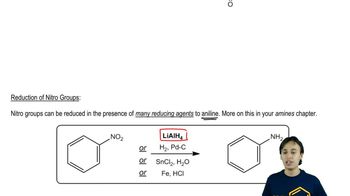Multiple Choice
Predict the major, organic product for the following reaction.
 Verified step by step guidance
Verified step by step guidance Verified video answer for a similar problem:
Verified video answer for a similar problem:



 9:12m
9:12mMaster The Primary Amines Flowchart with a bite sized video explanation from Johnny
Start learning